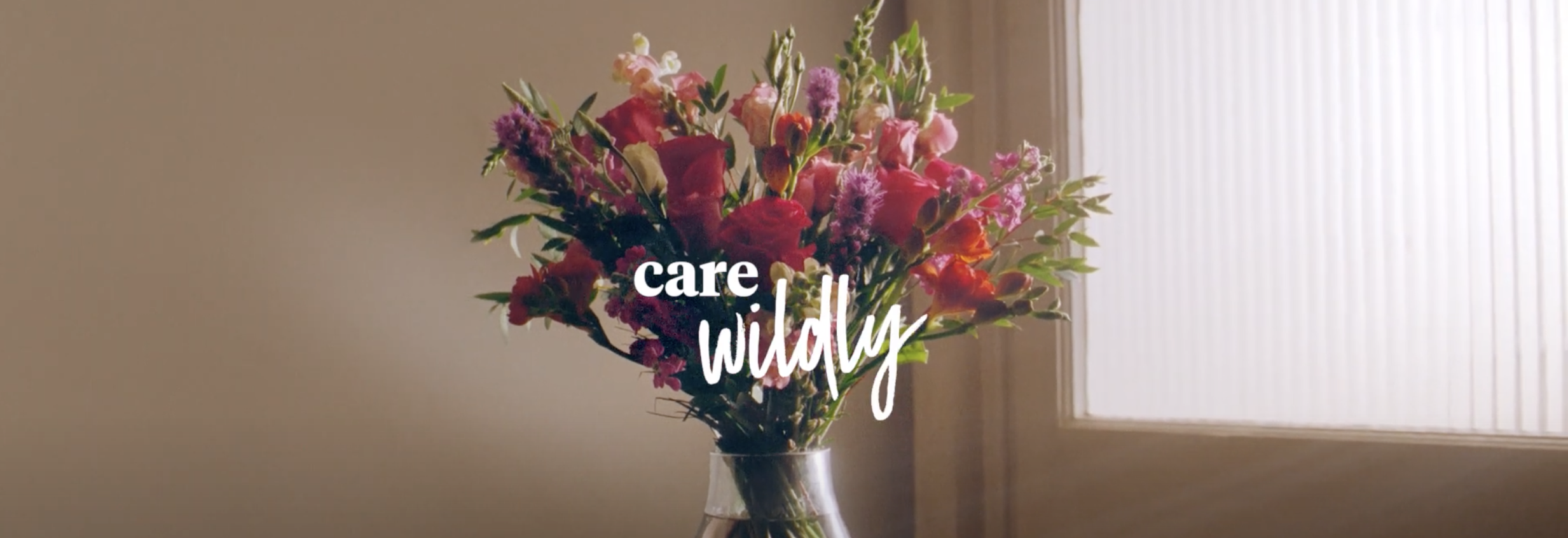Balancing short-term sales-focused marketing and marketing to build the brand was a topic of hot debate in a recent Mastering Brand Growth programme workshop. I suggested that great marketing can in fact build the brand AND help SMS (sell more stuff). Online flower seller Bloom & Wild is an example of delivering this double whammy.
Bloom & Wild have achieved good results with their first brand-focused TV campaign, ‘Care Wildly’. The ad shows a woman sending Blood & Wild flowers to her sister, as thanks for being both a sister and a stand-in mum. In this post I share some learnings from a talk by brand and communications director Charlotte Langley at Thinkbox’s recent ‘TV in Focus’ event (1).
1.Driving reach
Reach is key to driving penetration, which is in turn key to volume growth, as we’ve posted on before. “We know that we will cap our growth if we don’t continue filling the top of the funnel,” Charlotte pointed out (1).
And TV’s broad reach is one key reason for Bloom & Wild to use it in their media mix. “We know that TV drives that broader reach that’s difficult for us to get with more targeted audiences on social,” observed Charlotte.
The broad reach of TV is shown in the chart below by Ebiquity (2). Whilst Facebook and YouTube deliver comparable reach for younger viewers, TV provides much broader reach for people 45+ who make up half the UK population.
2.Driving awareness and consideration
Bloom & Wild’s marketing previously focused 100% on driving immediate response, often with a special offer. However, whilst this this type of marketing has short-term impact, it has less long term effect. In contrast, driving awareness and consideration can have both short and long term effects, as we posted on here.
The TV campaign more than doubled top of mind awareness and increased brand consideration by nearly 50%. “It allows us to tell a story of who we are, really important for driving consideration,” explained Charlotte. “In search and social I can tell you a bit about us, but you can’t really get a sense of what we’re about.”
The power of TV for storytelling is illustrated by the significantly higher levels of attention versus social and digital channels (below).
3.Driving distinctiveness
Driving distinctiveness is key to build the memory structure needed for brand consideration. Integrating the brandname into the tagline, ‘Care Wildly’, helped Bloom & Wild do this. “That was really important for strategically building brand name fame,” Charlotte explained.
Beyond the tagline, the film also shows a more ‘wild’ relationship between the flower giver and receiver, compared to conventional floral gift brands. Over time, I suggest there is an opportunity to further boost distinctiveness, via other brand properties such as visual devices, sonic branding or colours.
It was interesting to learn how this increased consideration translated into a higher share of search over the last two quarters. Share of search is a good indicator of brand growth as we posted on here.
4.Driving acquisitionn
Charlotte worked with her counterpart in acquisition marketing, Gary Taylor, to create a media strategy that brought brand and performance together. “It was really important that we did that together, we went to the board together, and presented a united strategy,” Charlotte said (1).
TV’s cost per acquisition proved to be similar to other channels used for direct response, such as search and social channels.
In conclusion, the Bloom & Wild story shows that brand building and business building don’t have to be treated as separate activities. You can build the brand AND sell more stuff, by telling a product story in an emotionally compelling way.
Sources:
(1) https://www.marketingweek.com/bloom-wild-tv-brand/
(2) https://www.ebiquity.com/research/ebiquity-report-mind-the-gap/thank-you/
